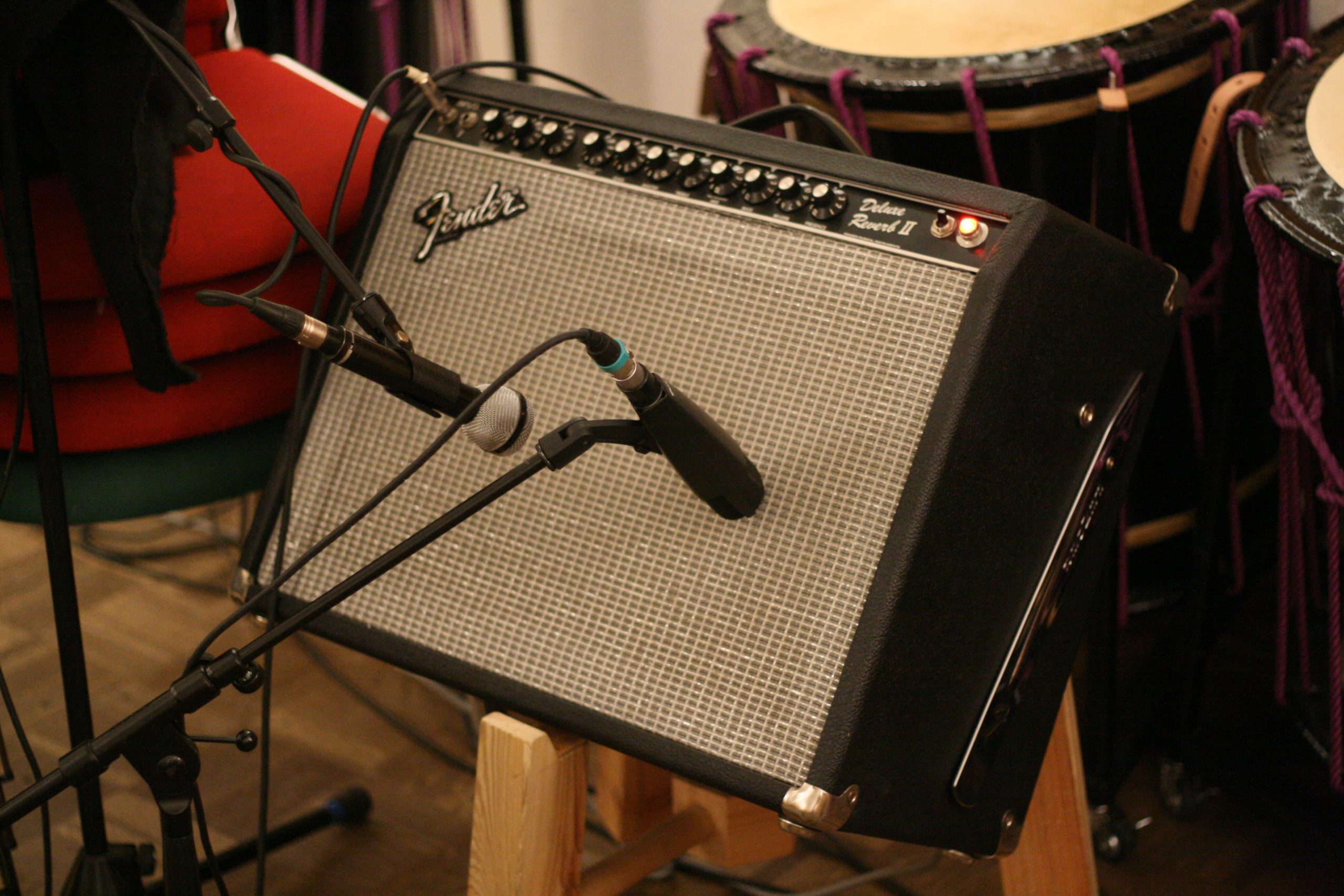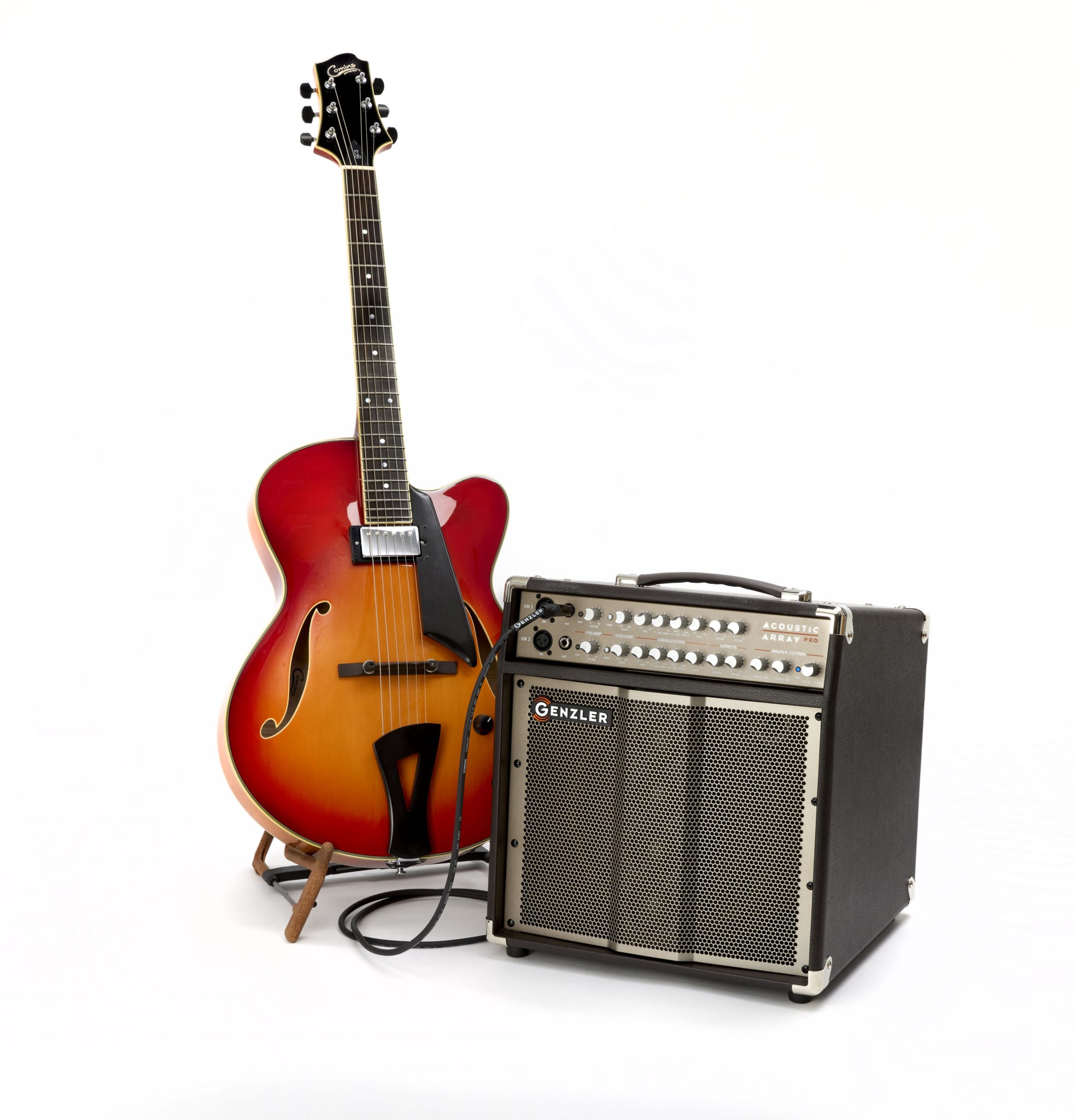To mic an acoustic guitar, use a small diaphragm condenser mic placed above the soundhole. Positioning matters.
Miking an acoustic guitar is essential for capturing its true essence and tonal quality. The placement and type of microphone used can greatly impact the sound produced. Whether recording in a studio setting or performing live, understanding the best methods for miking an acoustic guitar is crucial for achieving the desired audio results.
In this guide, we will explore various microphone techniques and placements to help you capture the rich and vibrant sound of your acoustic guitar accurately. Mastering the art of miking an acoustic guitar can enhance your recordings and performances, bringing out the nuances and intricacies of this versatile instrument.

Credit: www.amazon.com
Choosing The Right Microphone
Choosing the right microphone is crucial when miking an acoustic guitar as it can greatly impact the sound quality of your recordings. One of the key factors to consider is the type of microphone you use. There are various options available, but one of the first decisions you’ll need to make is whether to go for a dynamic or condenser microphone.
Consider Your Budget
Before choosing a microphone, it’s important to consider your budget and how much you are willing to invest in a quality microphone. Keep in mind that higher-priced microphones often offer better sound quality and durability.
Dynamic Vs. Condenser Microphones
Dynamic microphones are rugged and versatile, making them a great choice for live performances and recording loud sound sources. On the other hand, condenser microphones are more sensitive and provide a more detailed sound, making them ideal for capturing the nuances of an acoustic guitar.

Credit: upayasound.com
Placement Techniques
When it comes to miking an acoustic guitar, the placement of the microphone plays a crucial role in capturing the natural sound of the instrument. Proper placement can enhance the tone and clarity of the guitar while minimizing feedback issues. Here are some key techniques to consider:
Finding The Sweet Spot
- Position the microphone around the 12th fret for a balanced sound.
- Experiment with different angles to capture the desired frequencies.
- Keep the microphone at a distance of 6-10 inches from the guitar.
Dealing With Feedback Issues
- Use a feedback suppressor or notch filter to eliminate unwanted noise.
- Opt for a cardioid microphone to reduce feedback from stage monitors.
- Adjust the acoustic guitar’s EQ settings to prevent feedback at high volumes.
Using External Preamps And Eq
Miking acoustic guitar involves various techniques and equipment to capture the true essence of its sound. One crucial aspect of this process is utilizing external preamps and EQ for enhancing the tonal quality and overall performance of the acoustic guitar. By understanding the benefits of external preamps and mastering the art of balancing EQ for acoustic guitar, musicians can achieve a rich and dynamic sound that resonates with the audience.
Benefits Of External Preamps
Using an external preamp with an acoustic guitar offers several advantages. Firstly, it allows for better control over the instrument’s signal before it reaches the recording or amplification stage. External preamps can also enhance the warmth and clarity of the guitar’s sound, ensuring a more professional and polished output. Additionally, they provide the flexibility to adjust the gain and impedance, catering to the specific requirements of the guitar and the recording environment.
Balancing Eq For Acoustic Guitar
When it comes to EQ for acoustic guitar, the goal is to achieve a balanced and natural sound that accentuates the instrument’s unique characteristics. Balancing EQ involves careful adjustments to the low, mid, and high frequencies, aiming to preserve the guitar’s inherent tone while addressing any sonic inconsistencies. By utilizing EQ effectively, musicians can sculpt the sound of their acoustic guitar to fit seamlessly into a mix, whether in a live performance or studio recording.

Credit: www.genzleramplification.com
Understanding Pickup Systems
When it comes to miking acoustic guitars, understanding pickup systems is essential for achieving the right tone and sound quality. Pickup systems allow you to amplify the sound of your acoustic guitar, making it louder and suitable for different live performance settings. In this article, we’ll explore the different types of pickup systems and learn how to blend microphones with pickups for the best results.
Types Of Pickup Systems
Acoustic guitars can be equipped with various types of pickup systems, each offering unique advantages. It’s important to understand these options to make an informed choice based on your preferences and playing style.
| Type | Description |
|---|---|
| Soundboard Transducers | These pickups are typically mounted on the guitar’s soundboard, capturing the vibrations and translating them into an electrical signal. They offer a natural sound with good feedback resistance. |
| Under-Saddle Pickups | These pickups are installed under the saddle of the guitar’s bridge, detecting the vibrations as the strings resonate. They provide a balanced and clear sound, ideal for fingerstyle players. |
| Soundhole Pickups | As the name suggests, these pickups are placed in the soundhole of the guitar. They offer a simple installation process and can provide a warm and full-bodied tone. |
- Benefits of Soundboard Transducers: Capture natural sound, good feedback resistance.
- Benefits of Under-Saddle Pickups: Balanced and clear sound, ideal for fingerstyle playing.
- Benefits of Soundhole Pickups: Easy installation, warm and full-bodied tone.
Blending Microphones With Pickups
While pickup systems are great for amplifying your acoustic guitar, using microphones in conjunction with pickups can further enhance your sound and add depth. Blending these two sound sources allows you to capture the nuances and characteristics of your guitar’s tone.
When blending microphones with pickups, it’s important to experiment and find the right balance. Here are some tips to make the most out of this combination:
- Positioning: Place the microphone near the soundhole or around the 12th fret to capture different aspects of the guitar’s sound.
- EQ Adjustment: Use the equalizer to fine-tune the balance between the microphone and pickup signals, emphasizing certain frequencies if needed.
- Phase Alignment: Check for any phase cancellation issues that may arise when combining the microphone and pickup signals. Adjust the phase of either source to achieve a more cohesive sound.
Blending microphones with pickups provides a wider range of tonal possibilities, allowing you to tailor your sound to specific performance situations. Whether you’re playing in a small venue or a large concert hall, this combination can help amplify and enrich your acoustic guitar’s sound.
Recording And Live Sound Tips
When it comes to miking acoustic guitars for recording or live sound, achieving a natural and balanced sound is crucial. Whether you’re recording at a studio or performing on stage, understanding the right techniques can make a significant difference in the quality of your sound. In this section, we’ll discuss important tips to help you capture the natural sound of your acoustic guitar and deal with stage monitoring.
Capturing The Natural Sound
To capture the beautiful, authentic sound of your acoustic guitar, it’s important to position the microphone in the right spot. Placing the microphone slightly above the soundhole can help capture the warmth and depth of the instrument. Experiment with different distances and angles to find the sweet spot that complements the unique tonal characteristics of your guitar.
Additionally, using a condenser microphone can further enhance the fidelity and detail of your recordings. These microphones are designed to capture a wide frequency range, which is ideal for reproducing the natural sound of acoustic guitars.
Another tip to consider is using multiple microphones to achieve a richer and more immersive sound. By placing one microphone near the soundhole and another near the guitar’s neck or bridge, you can capture a wider range of frequencies and create a more dynamic sound.
Dealing With Stage Monitoring
When it comes to live performances, stage monitoring plays a vital role in helping you hear your guitar and stay in tune with the rest of the band. To avoid feedback issues, it’s crucial to position the monitor speakers correctly. Ensure that they are not facing directly towards the microphone or your guitar to minimize the risk of unwanted feedback.
Additionally, using in-ear monitors can provide a more controlled and accurate monitoring experience. In-ear monitors allow you to hear your guitar and the rest of the band without relying too much on stage monitors, resulting in a cleaner and more consistent sound.
Another technique to consider is using a soundhole cover or feedback buster. These accessories can help reduce unwanted feedback caused by high sound levels on stage. Experiment with different types and sizes to find the one that works best for your specific acoustic guitar.
By following these recording and live sound tips, you can ensure that the natural sound of your acoustic guitar is accurately captured during recordings and performances. Experiment with different techniques and equipment to find the setup that suits your playing style and enhances the overall sound quality.
Frequently Asked Questions For Miking Acoustic Guitar
How Do You Mic An Acoustic Guitar For Live Performances?
To mic an acoustic guitar for live performances, position the microphone at the soundhole or around the 12th fret. Experiment with the distance and angle to get the right balance between the guitar’s resonance and any unwanted feedback.
What Type Of Microphone Works Best For Recording Acoustic Guitar?
For recording acoustic guitar, a condenser microphone is often preferred due to its ability to capture the nuances and details of the instrument. Large-diaphragm condensers and small-diaphragm condensers are commonly used for this purpose.
Can You Use A Dynamic Microphone For Miking Acoustic Guitar?
Yes, you can use a dynamic microphone for miking acoustic guitar, especially in live settings. While dynamic microphones may not capture the full range and subtleties of the acoustic guitar like condenser microphones, they can still provide good results and have the advantage of handling high sound pressure levels without distortion.
Where Should I Position The Microphone When Miking An Acoustic Guitar?
Position the microphone at the sweet spot, typically around the 12th fret or between the soundhole and the bridge. Experiment with distance and angle to achieve the desired tone, avoiding proximity effect (low-end boost) and excess handling noise.
Conclusion
Choosing the right microphone for your acoustic guitar is essential for capturing its natural sound. By understanding the different types of mics and their placement techniques, you can achieve the best results. Experimenting with various setups and taking the time to listen to the recordings will help you find the perfect sound for your acoustic guitar.
Happy miking!